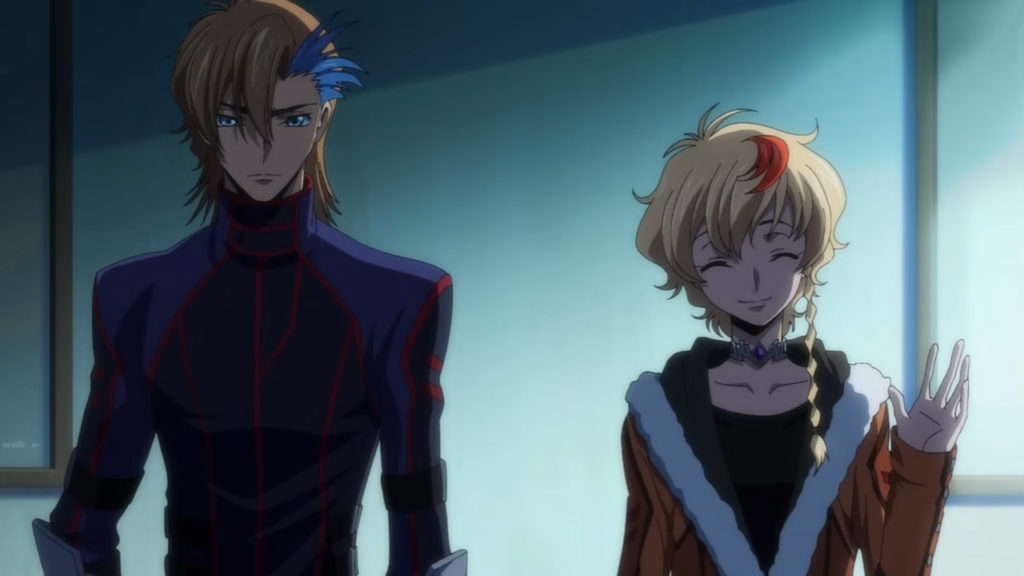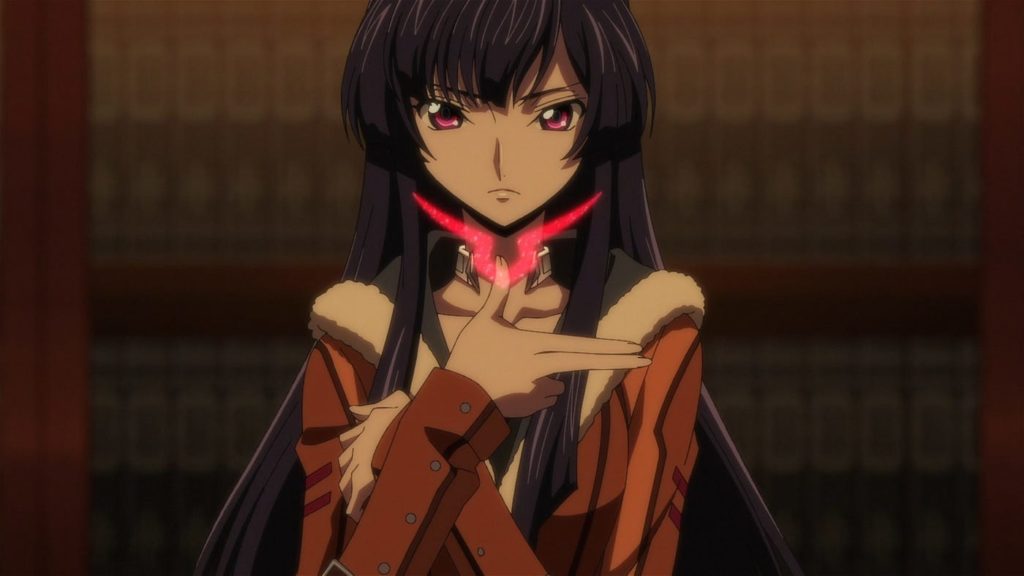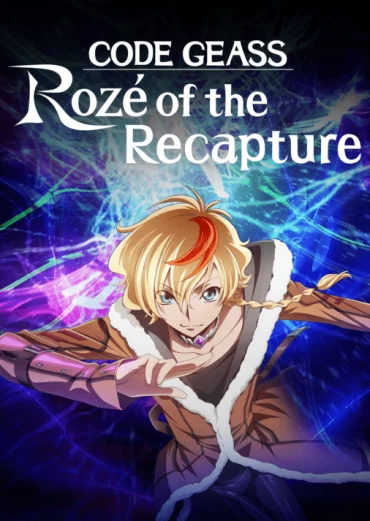Code Geass: Rozé of the Recapture Episodes 1 – 12 Streaming Review
Several years have passed since the death of Lelouch vi Britannia at the hands of Zero, and Japan has known peace. That is until the remnants of the Britannia Empire reformed as the Neo Britannian Empire, and decided to take over the island of Hokkaido for themselves. Then barricading the block behind an impregnable force field, and renaming the Japanese as Elevens once more. Several new freedom fighter groups have arisen since Neo Britannia came to power, including two brothers, Ash and Rozé (pronounced rosé, like the wine) also known as the Nameless Mercenaries, who have agreed to help another group called the Seven Stars, to stop Neo Britannia. But the brothers have ulterior motives: Rozé is actually Sakuya Sumeragi, a half Japanese-half Britannian Princess, who has the power of Geass, with a plan to rescue her friend Sakura in prison, and also take revenge for the death of her father.
If you’re reading this and are thinking; ‘wait, there is a Code Geass sequel streaming right now?’ don’t worry, you’re not alone. Rozé of the Recapture has the unfortunate case of ‘being on Disney+’, meaning it was streaming weekly on that platform with no marketing whatsoever, only word of mouth to promote it. That can only go so far however and can be easily missed if you’re not following fans, or the actors of the dub (for example). I only knew of its existence when I stumbled upon a tweet talking about the pilot episode, and from the replies it seems I wasn’t alone. In Japan the story was originally 4 mini movies, released in June, July and August this year, then later streamed as a 12-episode series in the West. Also this series is a sequel to the alternative timeline of Code Geass, set up with the trilogy of the movies (which made tweaks to the timeline) AND it’s a sequel to the Lelouch of the Re;Surrection movie too. But is this a Code Geass sequel worth discovering?

Before I get into the review, I would like to reiterate that as a sequel series, this isn’t beginner-friendly or an entry point into the Code Geass franchise at all. This series does have an opening monologue briefly setting the scene before the story properly starts, but unless you’ve watched the original Code Geass you’ll likely be confused. Rozé of the Recapture doesn’t just follow on from the movies, it also has many cameos from the Code Geass main series as well as the spin-off series Akito the Exiled (which admittedly I’ve not seen). If you’ve yet to watch the movies, only seen the TV show, you can probably get away with watching this sequel, but be aware that a few deaths from the main series were changed in the movie timeline.
As a TV sequel to one of the late 2000s’ most beloved anime, there’s a lot of pressure to hold up to the main series, but as we’ve had a movie sequel and several spin-offs already, there’s less pressure compared to other sequels in different franchises. On paper, Rozé of the Recapture seems to follow a lot of the same beats of Code Geass: the Britannians in power, dehumanising the Japanese again as Elevens, the main character having a Geass and a dual identity, etc. On the surface level, there are a lot of similarities but as the series goes on, there is enough to give Rozé of the Recapture its own identity, rather than just a rinse and repeat.
A lot of the new lords and knights of Neo-Britannia are victims of the previous government collapsing, orphan children of Britannians who died or went missing for various reasons, so it makes sense that a lot of them – who would feel forgotten or let down by the world – would find solace and comfort in a government like their old one, promising them power and security. Although a lot of the new members feel like copies of the nobles we met before (for example Narah Vaughn reminded me of Cornelia Li Britannia) and we never get to truly know all the new nobles before they’re toppled, but overall their aims and goals make sense.

Secondly we have Rozé/Sakuya, the new lead who is nowhere near as dramatic and charismatic as Lelouch, but that doesn’t stop her from being an interesting protagonist either way. Like Lelouch, Sakuya is a member of the Royal Britannian Empire, but the conflict – physical and emotional – is different. Sakuya’s friend Sakura is actually her body double, so Japan THINKS that the Princess has been captured, but in reality the Princess is in disguise to rescue the friend who’s been captured in her place. It creates an unique conflict where she’s facing a warped version of half her heritage (the Neo Britannians) whilst also feeling guilt for having a friend take her place. Then there’s the alter ego, Rozé, performing the role of Ash’s brother, who’s the tactician of the Nameless Mercenaries, whilst Ash is the combat expert. Lelouch’s alter ego Zero was mostly in the shadows, keeping his face covered, and was the mastermind of plans, not on the front lines until it was absolutely necessary to use his Geass. So Rozé’s more in-person role, using makeup and machines to disguise Sakuya’s face and voice, prevents re-treading the same ground as the original series, and bouncing off Ash when it comes to plans and executing them. It also allows Rozé to be in the thick of the actions more often than not.
Then we have Sakuya’s Geass, which admittedly I was a bit disappointed with. She has the same power as Lelouch, which is a shame, considering the different Geass we played with in the Lelouch of the Re;surrection film. But the one action that cements its use here is Sakuya’s Geass on Ash; Lelouch readily used his Geass on others with little regard to their will, and even the consequences, that came after. But Sakuya’s Geass use on Ash is much more personal. Once we have the reveal in Episode 2 of what that is, it not only paints Sakuya in a darker light but also provides a ticking clock on when Ash will find out the truth and as Ash is always in there, it’s a reminder to both the audience and Sakuya of said Geass, so the betrayal is felt at a much deeper level. Their relationship is made more complicated when, in one episode, Sakuya poses as a café waitress (it makes sense in context) and Ash ends up falling for that persona. Then we find out Ash’s background, an additional gut punch to the audience, and it’s a huge mess that Sakuya created that ends up being the emotional core of this story. Ash and Rozé/Sakuya’s dynamic is the strongest part of this series, and one that made the ending as good as it was, but it also keeps this series more grounded and smaller in scope. Being a series with smaller stakes is not a bad thing, as trying to continuously up the stakes can lead to ridiculous situations and eventual over bloating of story, so Rozé of the Recapture having a smaller scaled revolution and emotional stakes is welcomed here.
As for other elements carried over from Code Geass, I can confirm that the action is as fantastic as ever; the new mecha designs are badass as usual, there’s a mix of explosions and close combat, with lots of different players – both on the good and bad side – to mix up the conflict and battle styles. I especially enjoyed the final battle, with Ash and Sakuya working together, using their strengths to topple the enemy, rather than a Geass face-off as before, so it’s not a repeat of Code Geass’ excellent original ending. Another element carried over is the fanservice as there are plenty of big-busted women to enjoy here, but the one gripe I did have is from Episode 8, where a female is captured by the Britannians and is held in an extremely fan-service-y position, that basically looks like the Saber pose from Fate/Stay Night Unlimited Blade Works. There was no need for such a pose; being kept in a soundproof room with hands and feet tied was enough, but to be posed bent over with the camera perving from behind? All it accomplished was taking me out of the moment and not taking the interrogation scene seriously.

As this series was originally budgeted as several films, the animation was given a good budget and it’s a consistently good quality throughout. CLAMP are back with the designs, and the animation style is very similar to what we’ve seen before, so no new tricks or pushing of barriers here, but it’s still a good quality animation.
Kenji Kawai provides his first score for the series and it fits really well; there are plenty of rocking pulse-pumping tracks for the action, and more intense music when we catch up with the corrupt plans of the Neo-Britannians. Miyavi provides one of my favourite opening tracks of the year: ‘Running in My Head’, and DJ TeddyLoid and Hikari Mitsushima provide the ballad ‘Rozé’ as the ending track. There’s even an English dub for the series, released in simulcast with the episodes’ release, which is a nice surprise. For the various cameos from the previous series, the English dub cast including Mary Elizabeth McGlynn and Johnny Yong Bosch make their return. New cast member stand-outs include Cory Lee, who does an excellent job portraying the various sides of Ash from cold warrior to goofy café customer to traumatised victim. Props go to Luca Padovan and Suzie Yeung too, voicing the dual persona of Rozé and Sakuya; they speak in similar patterns so it’s easy to believe that they’re voicing the same character.
It’s a shame that Rozé of the Recapture got buried within Disney+’s vast library because overall, I think this series is decent. There are a few bumps in the second half of the series in regards to pacing, making me wish that it had a few more episodes to make the emotional beats hit harder and plot points not feel so rushed. But it’s still a part of Code Geass; with its explosive battles, big emotions and grand plans all wrapped up into a neat emotional core that work well with the new cast. If you’ve yet to check it out, I would recommend it. It doesn’t hit the highs of the original series, but it’s a fun ride whilst it lasts.
Code Geass; Rozé of the Recapture is now streaming on Disney+. Available in English, Spanish, Portuguese and Japanese dubs, with over 15 subtitle options including Spanish, French, and Italian.


